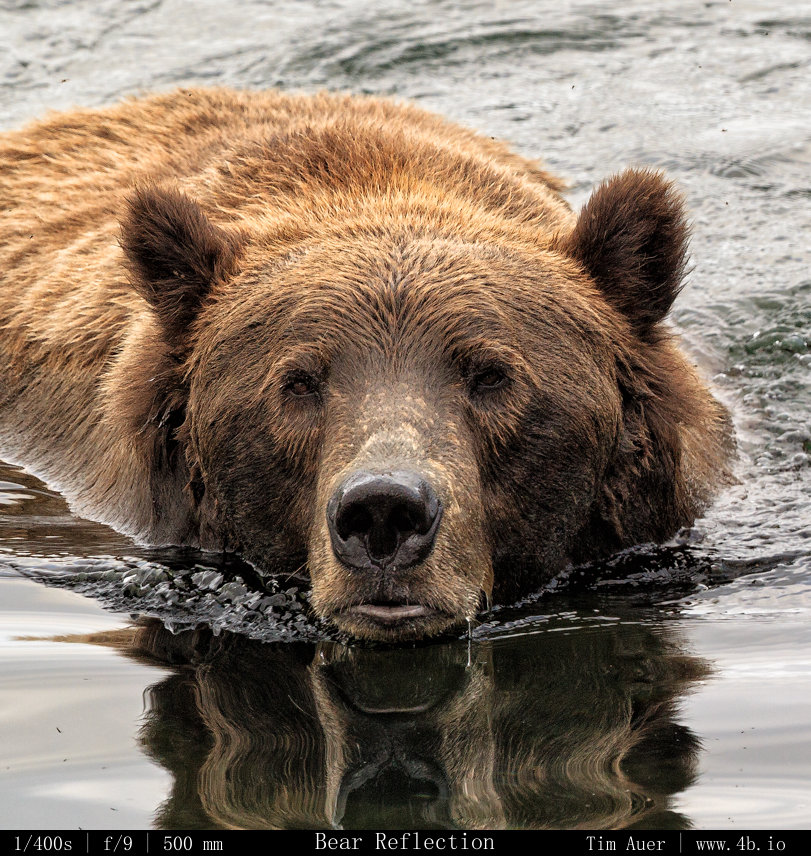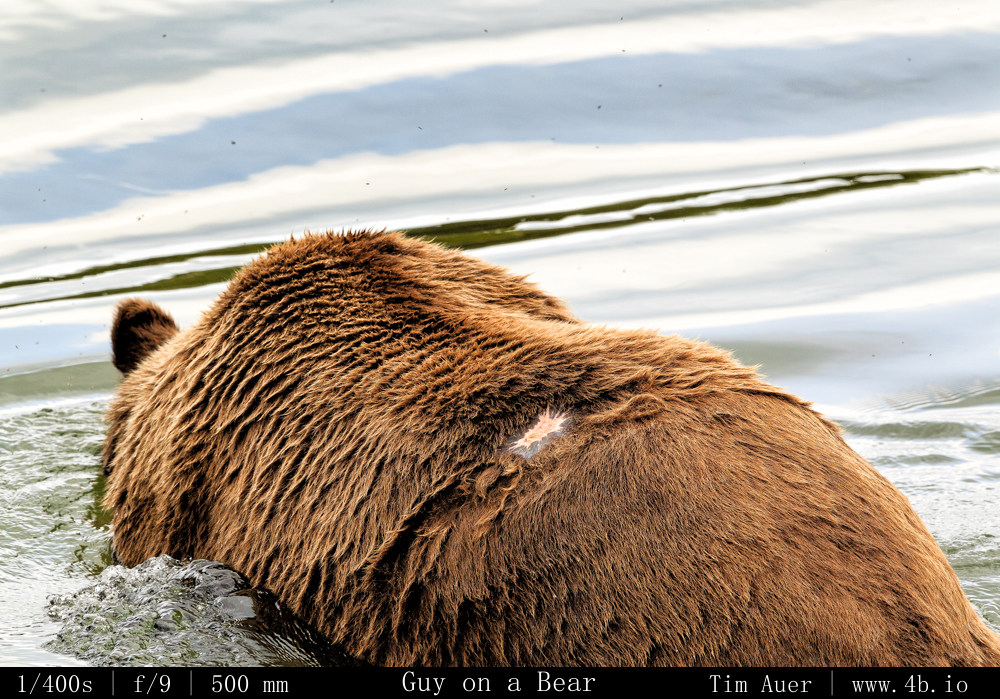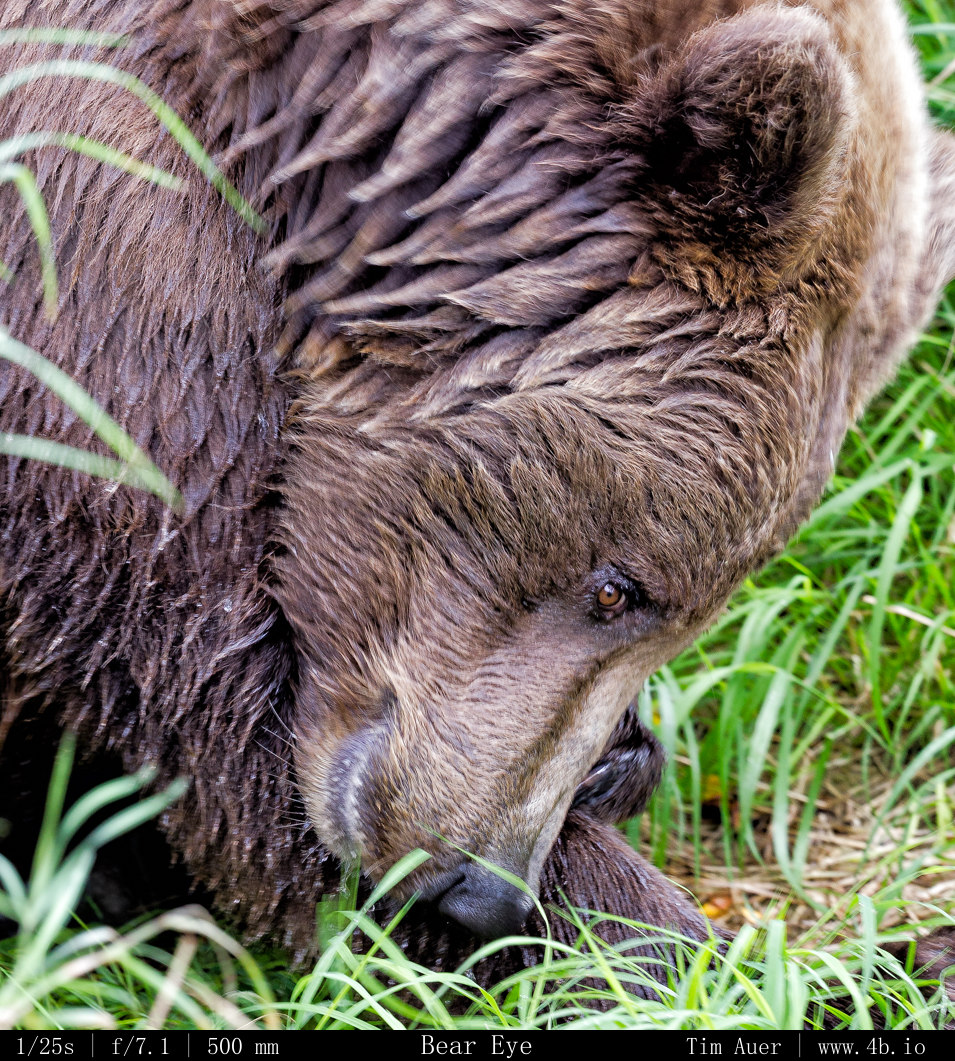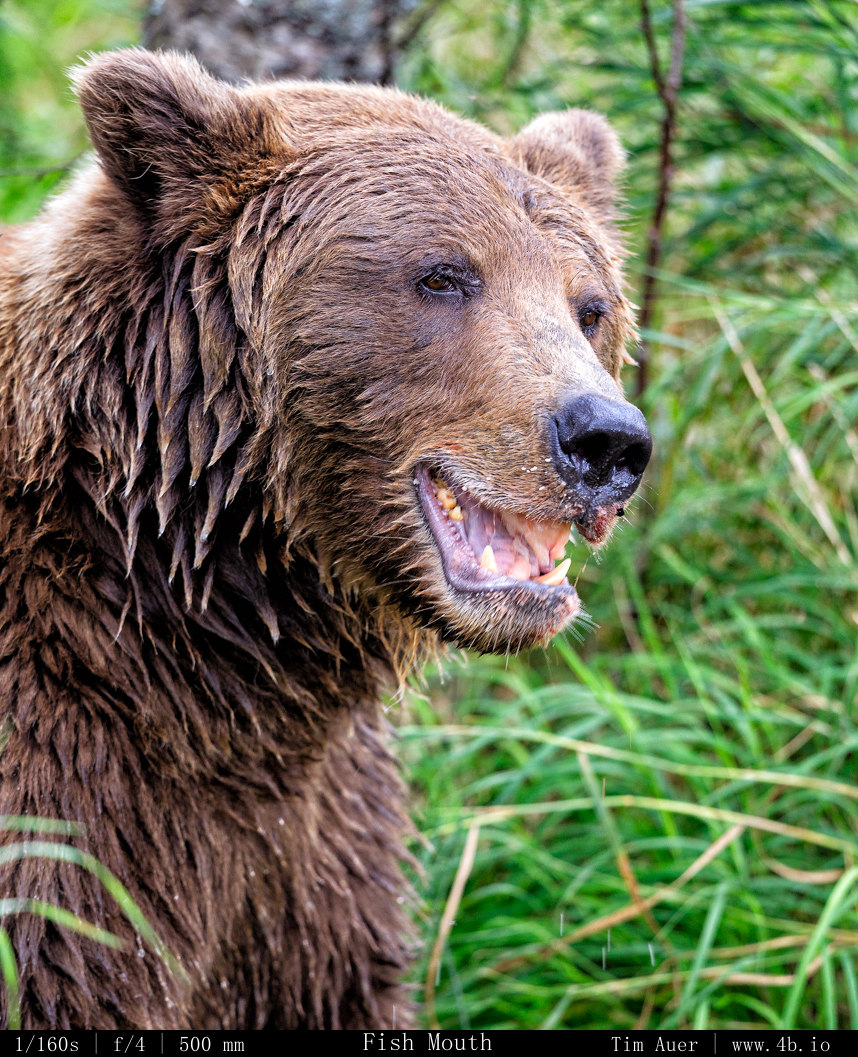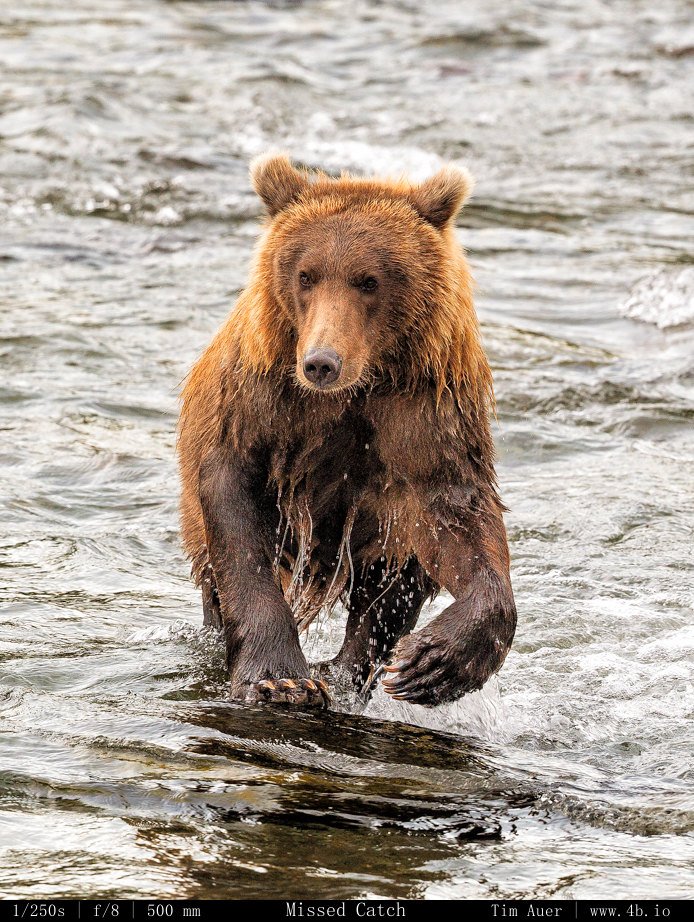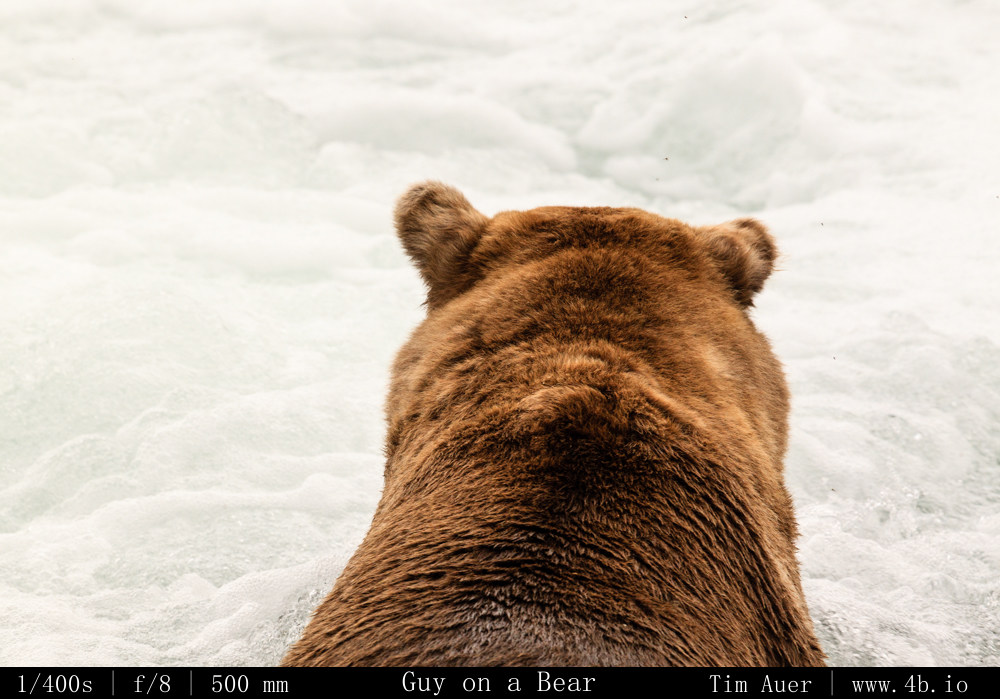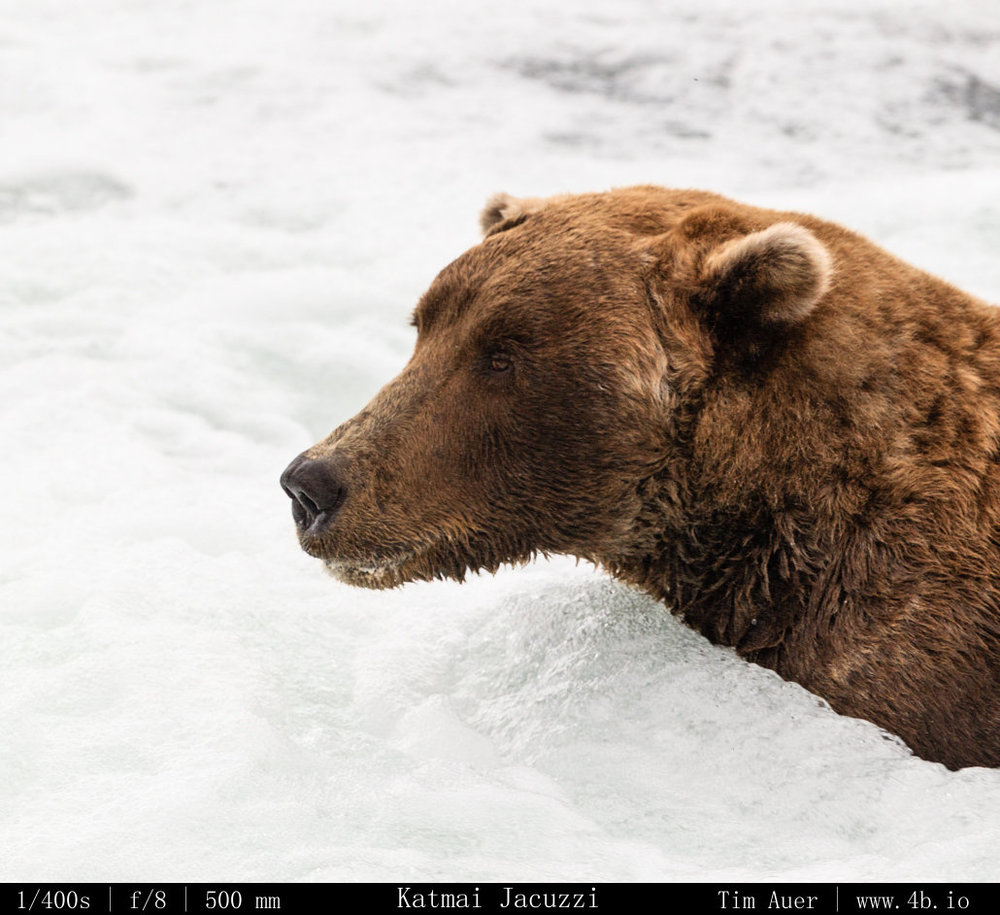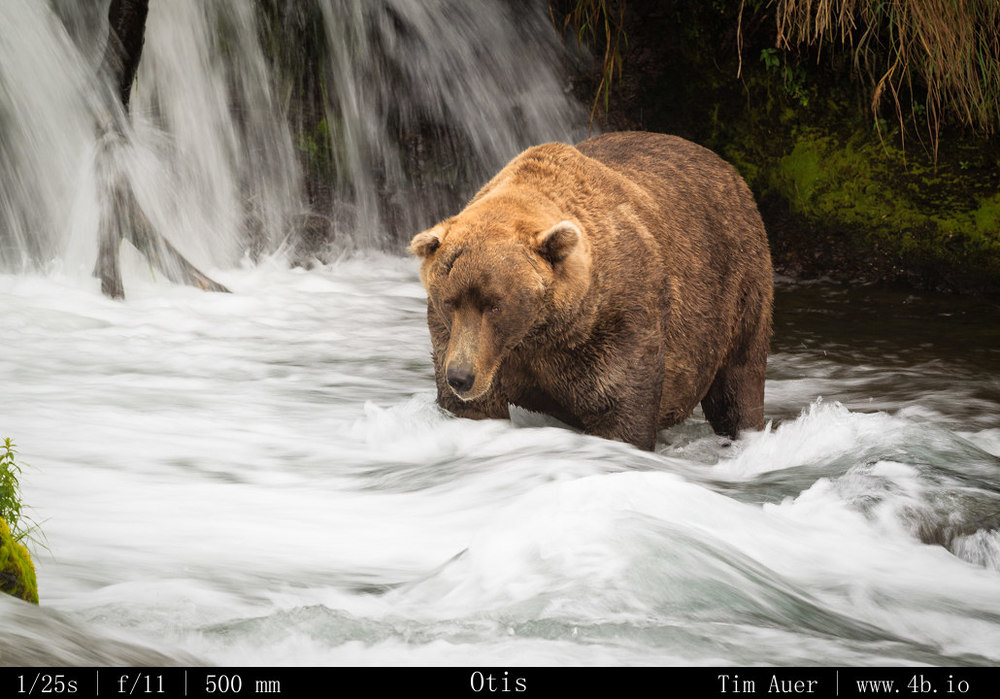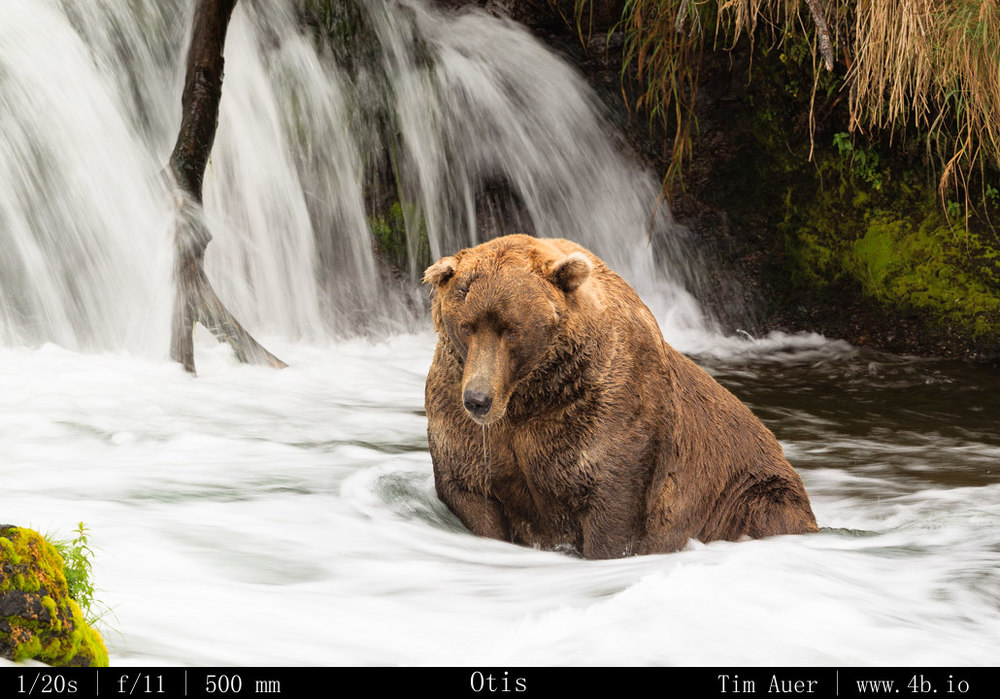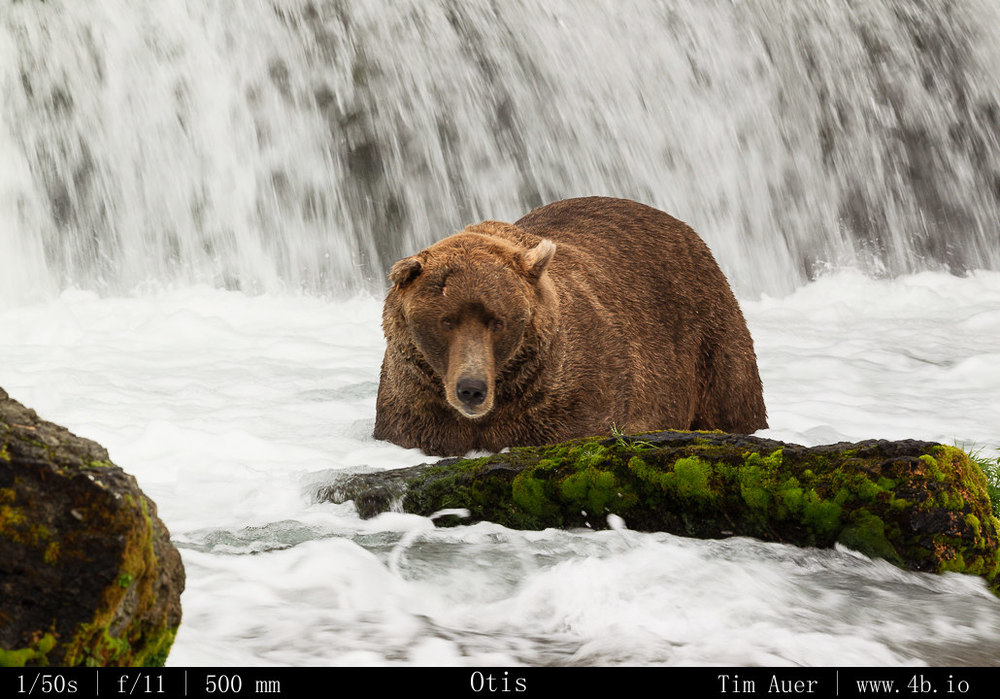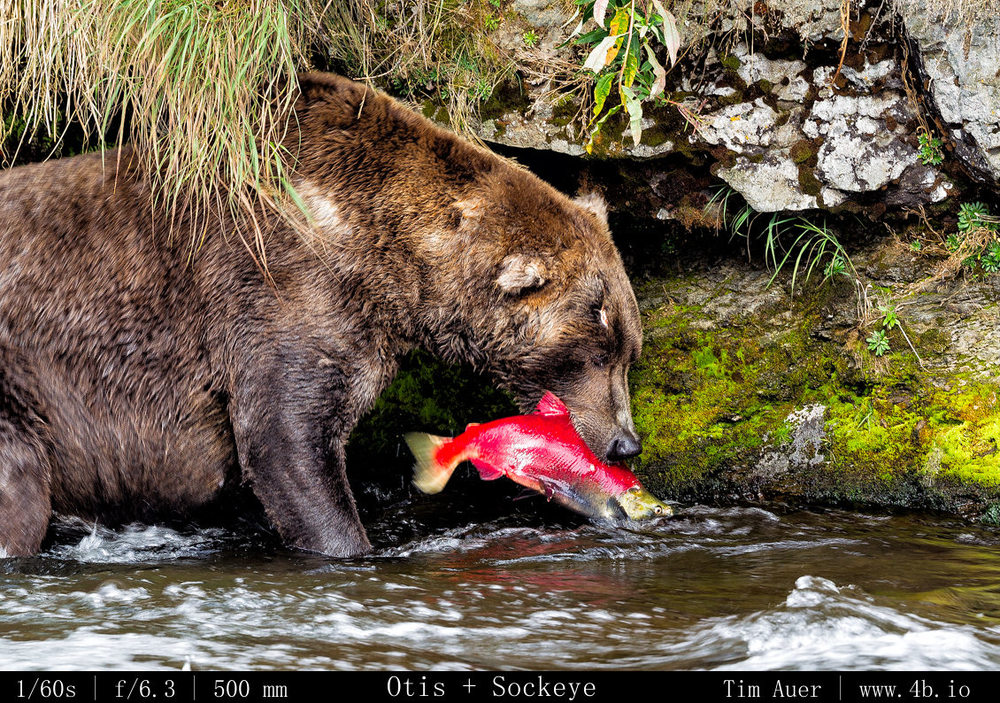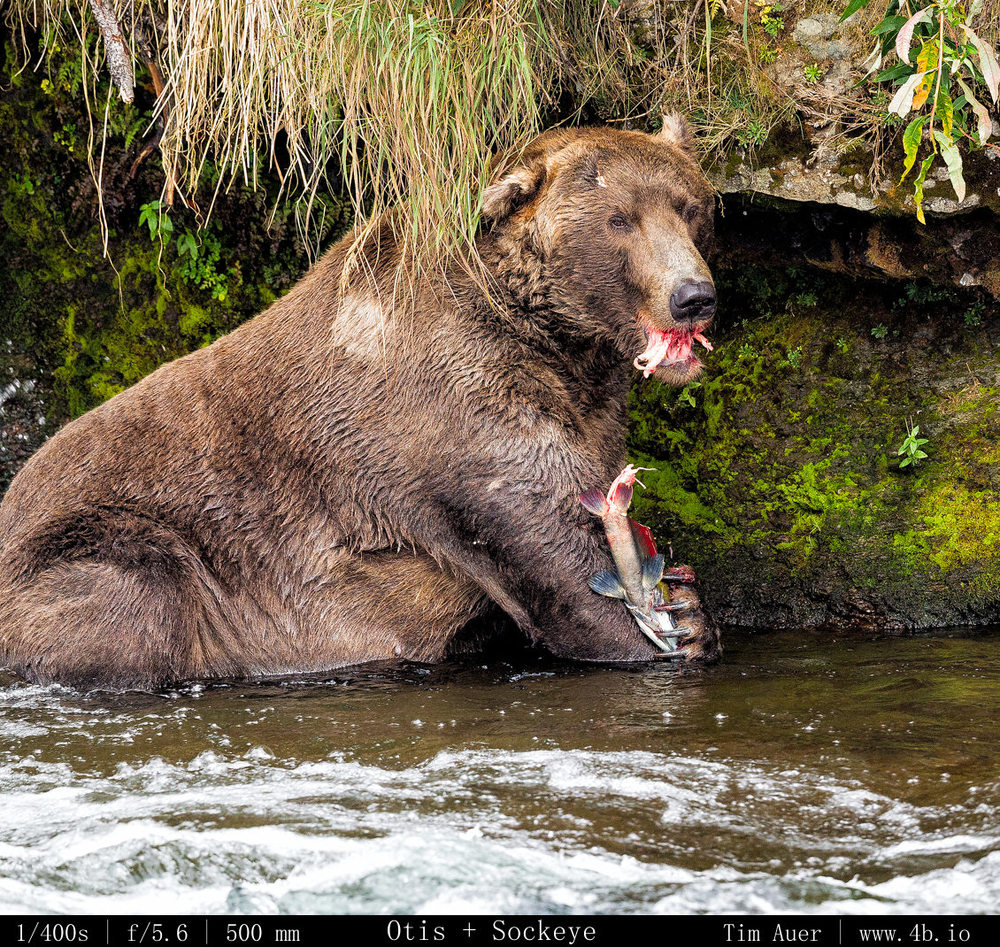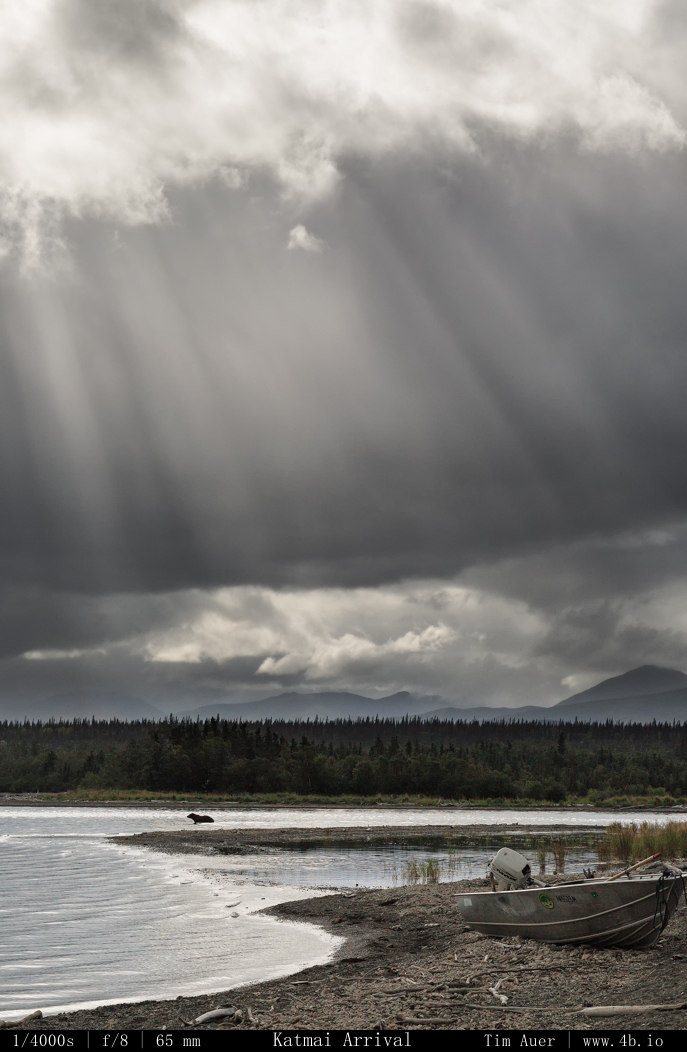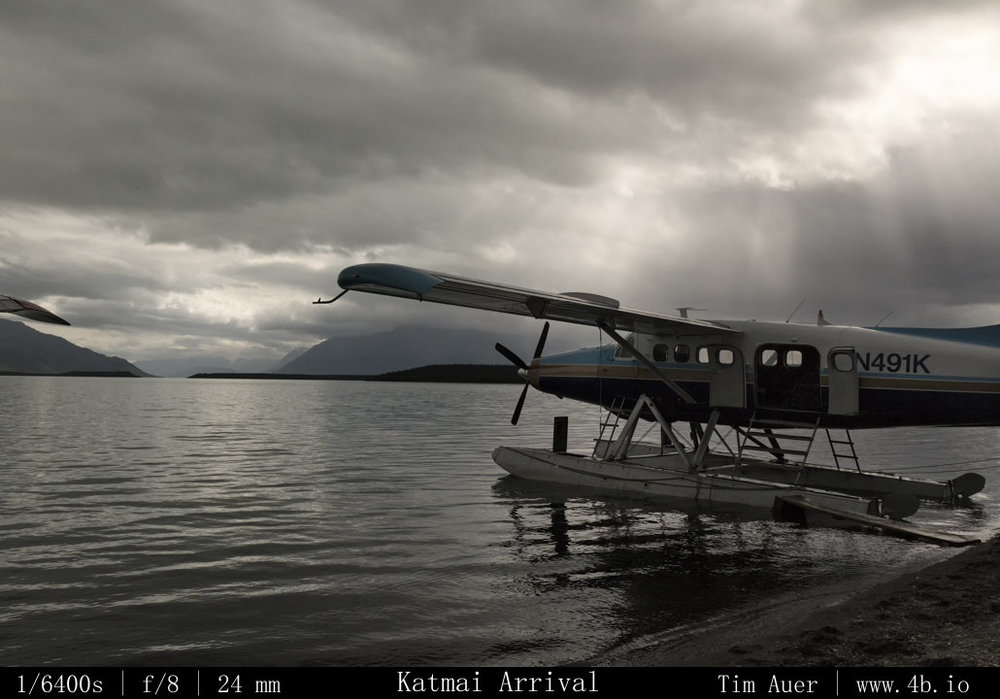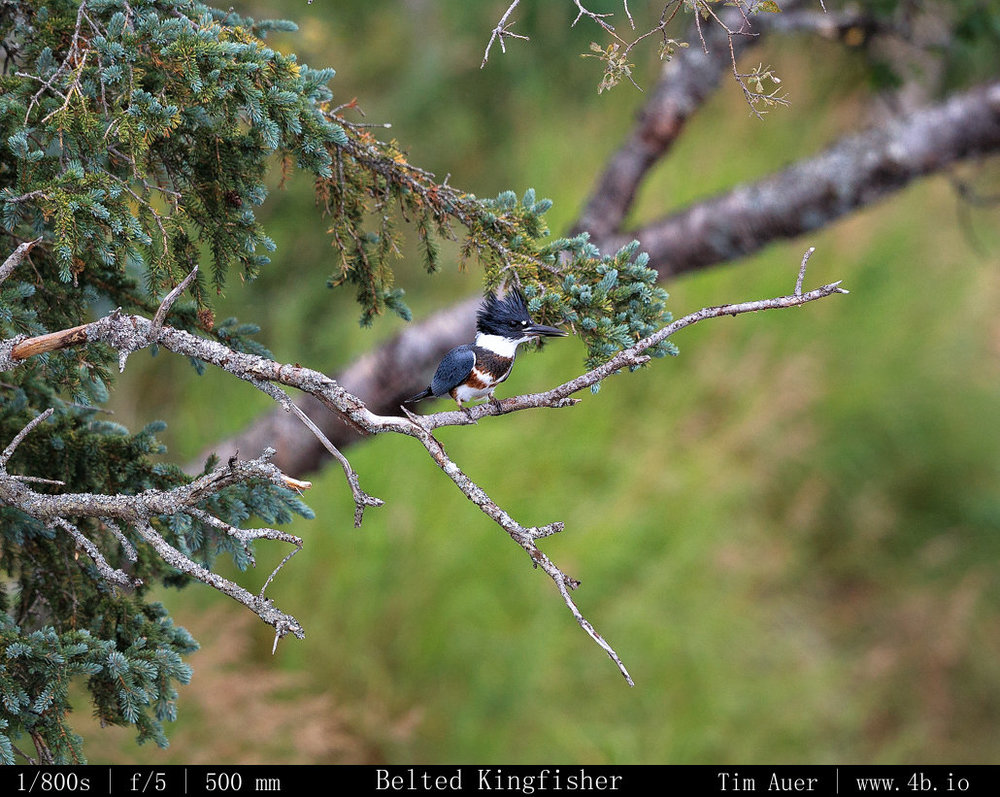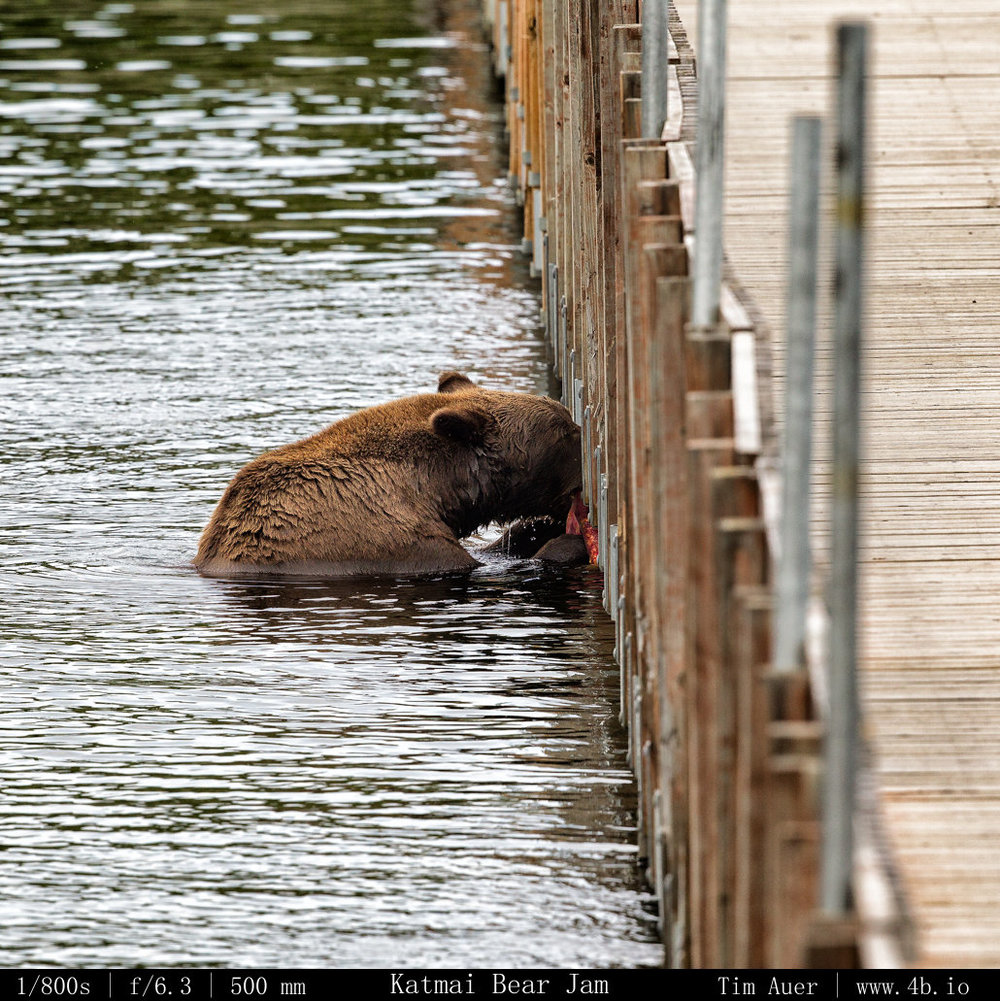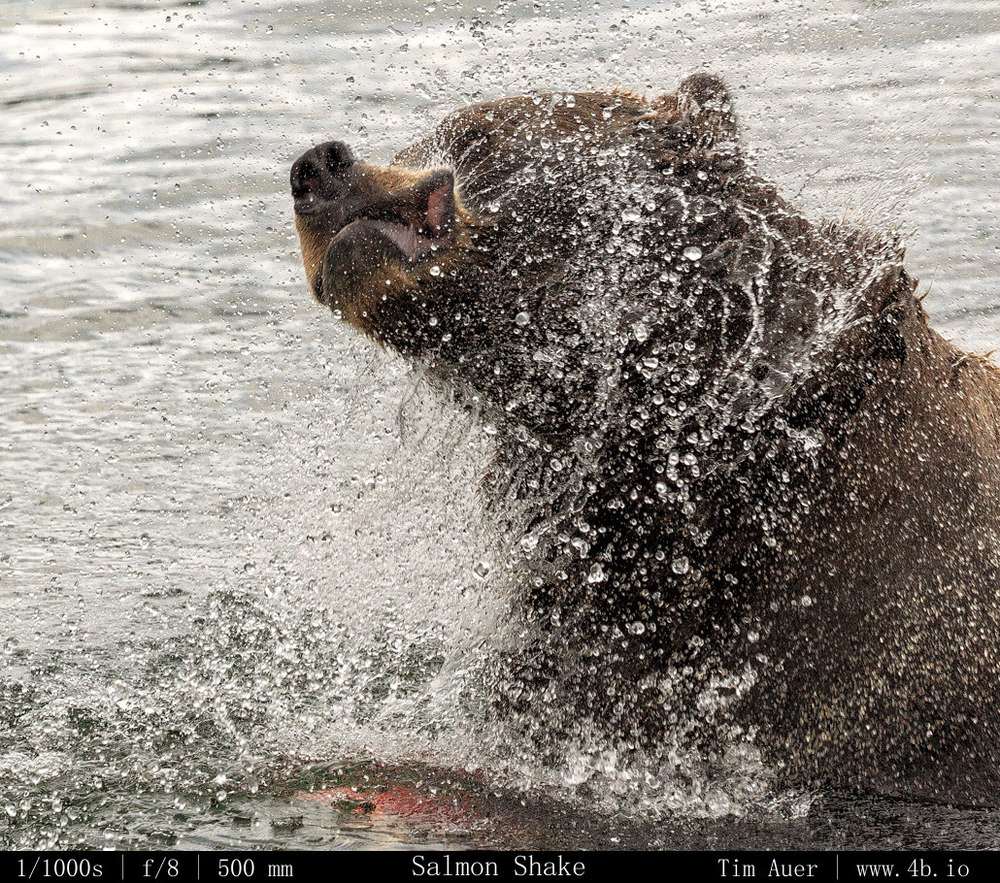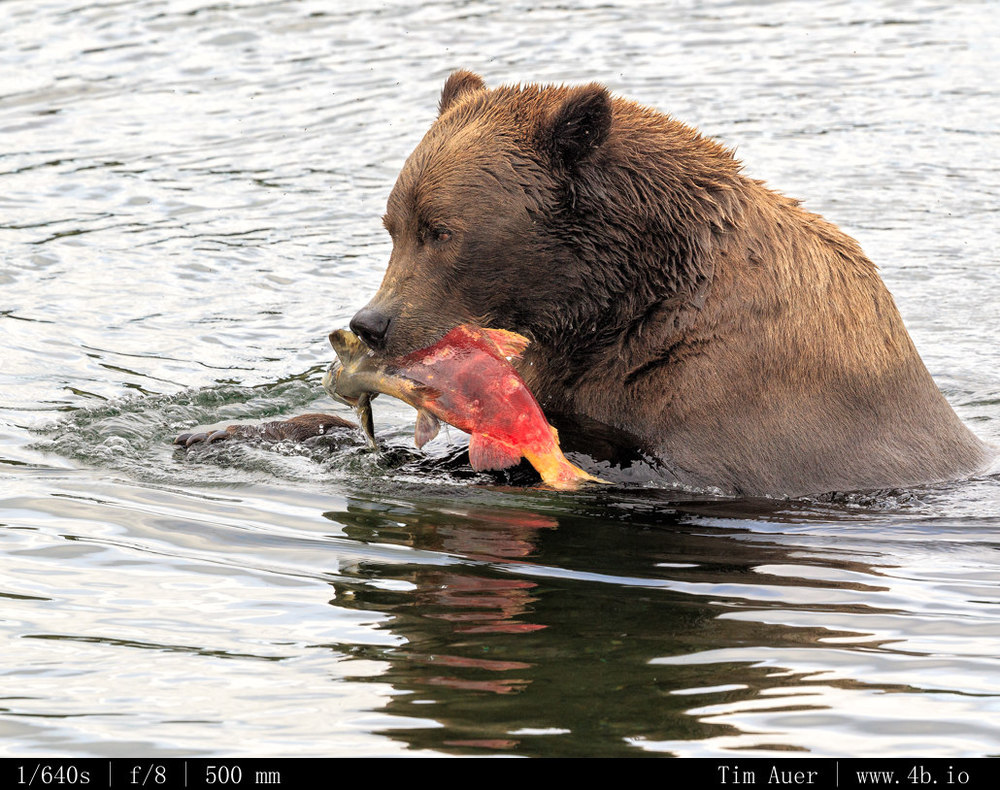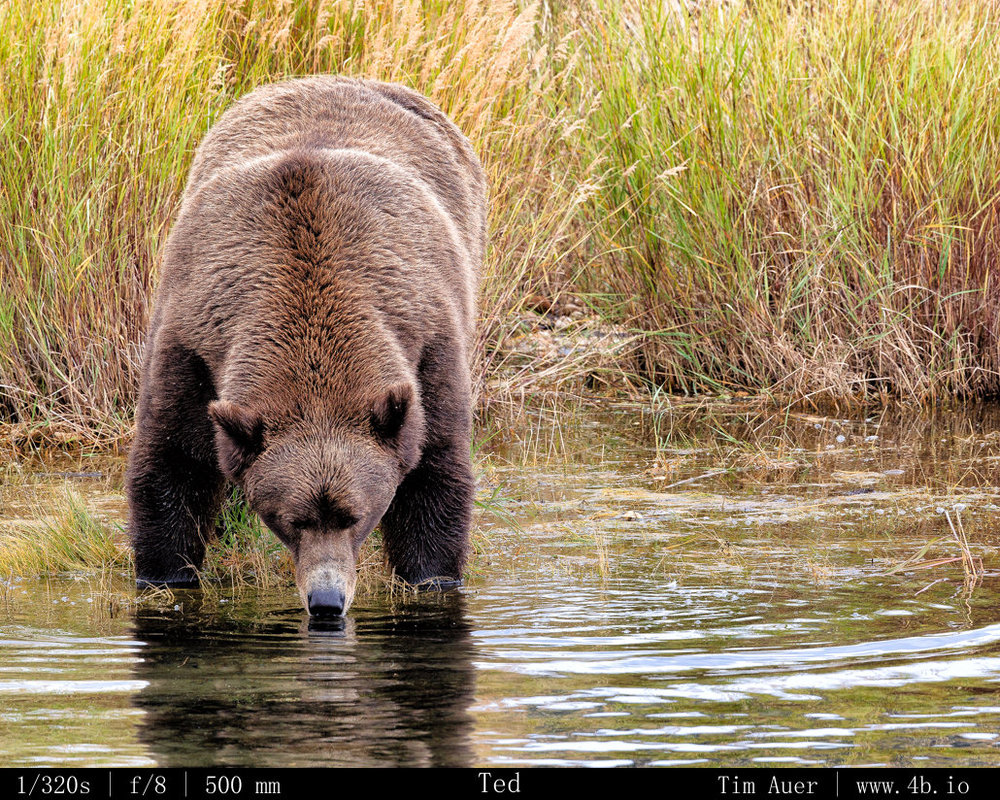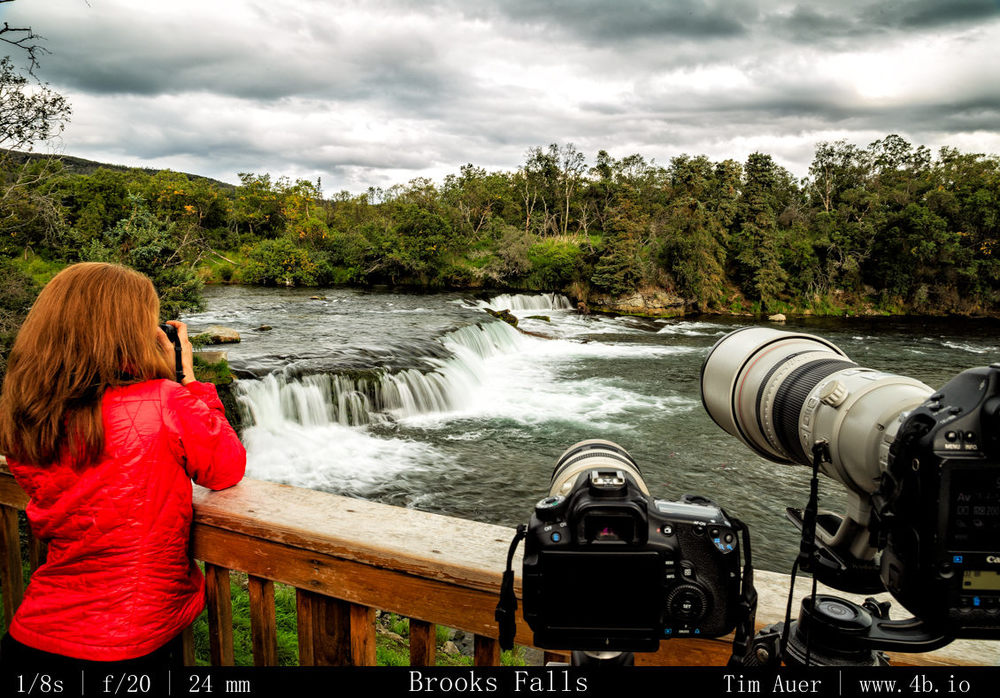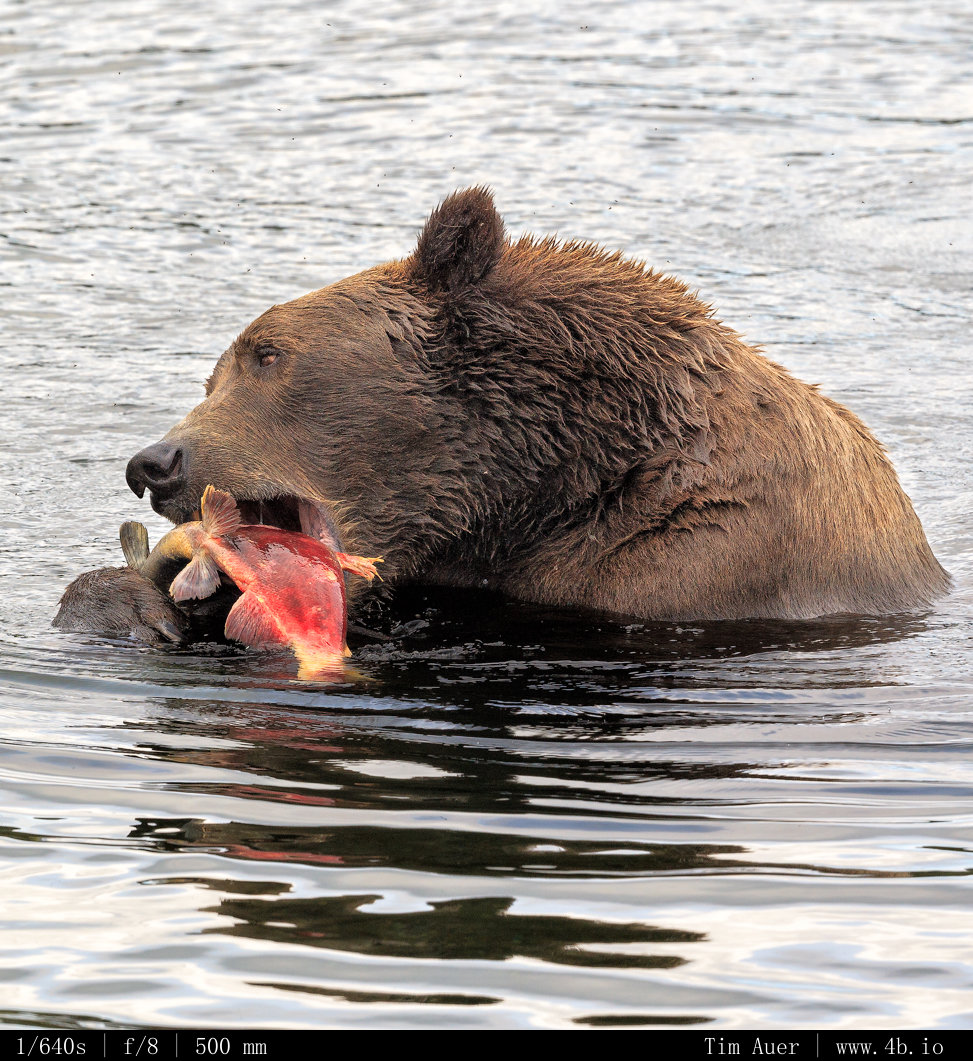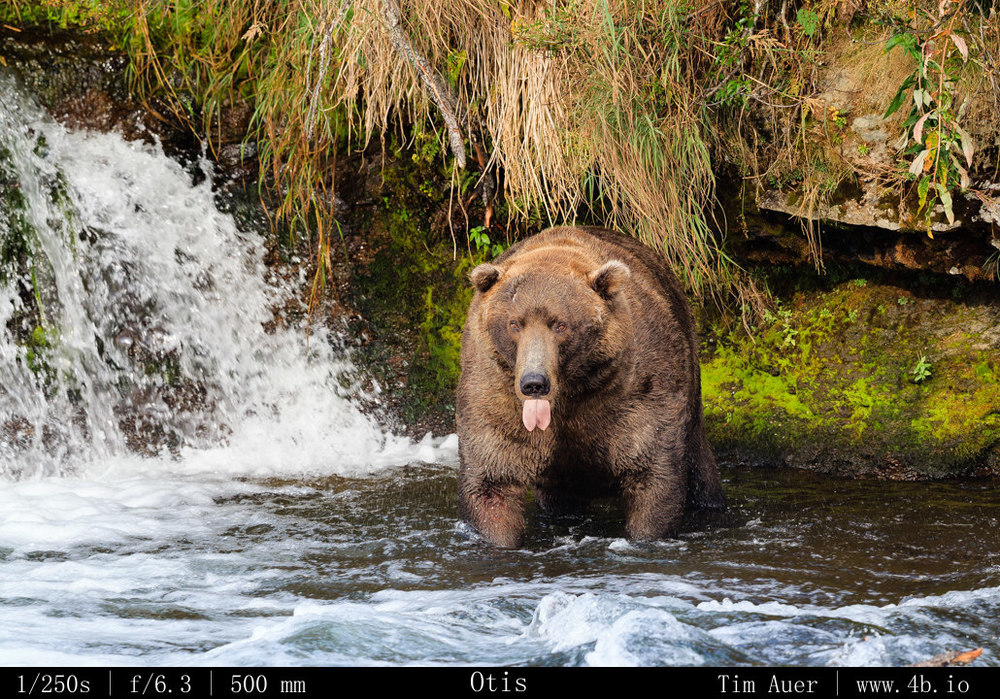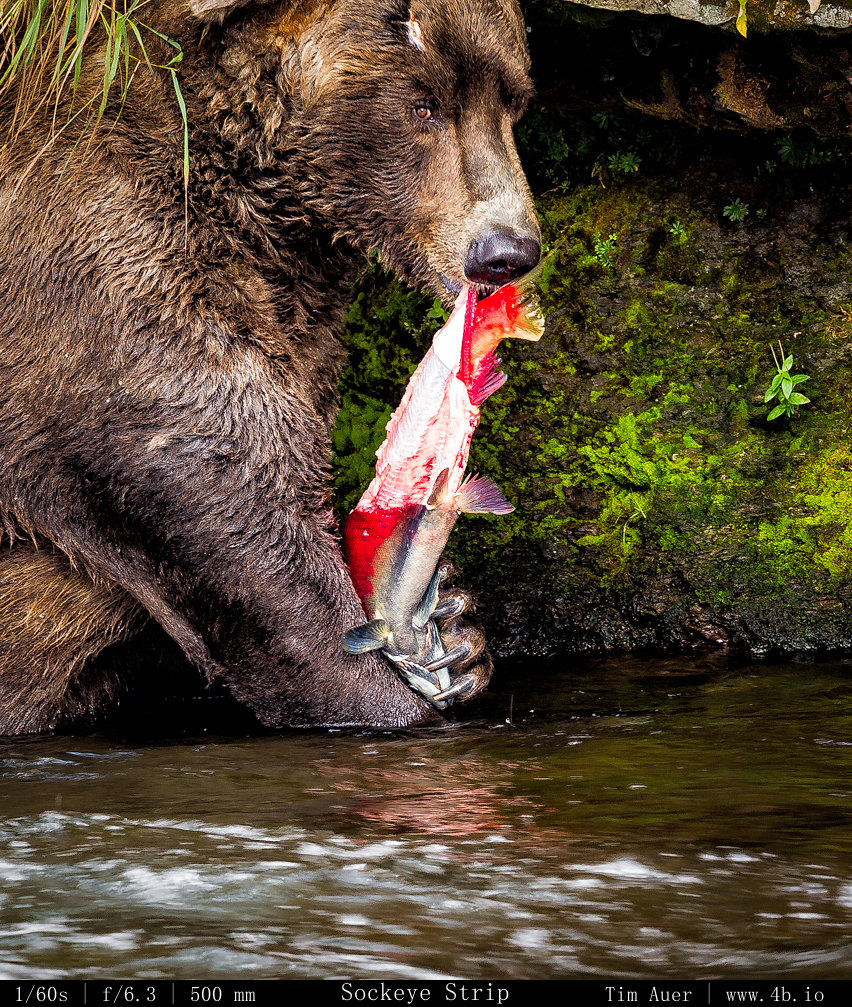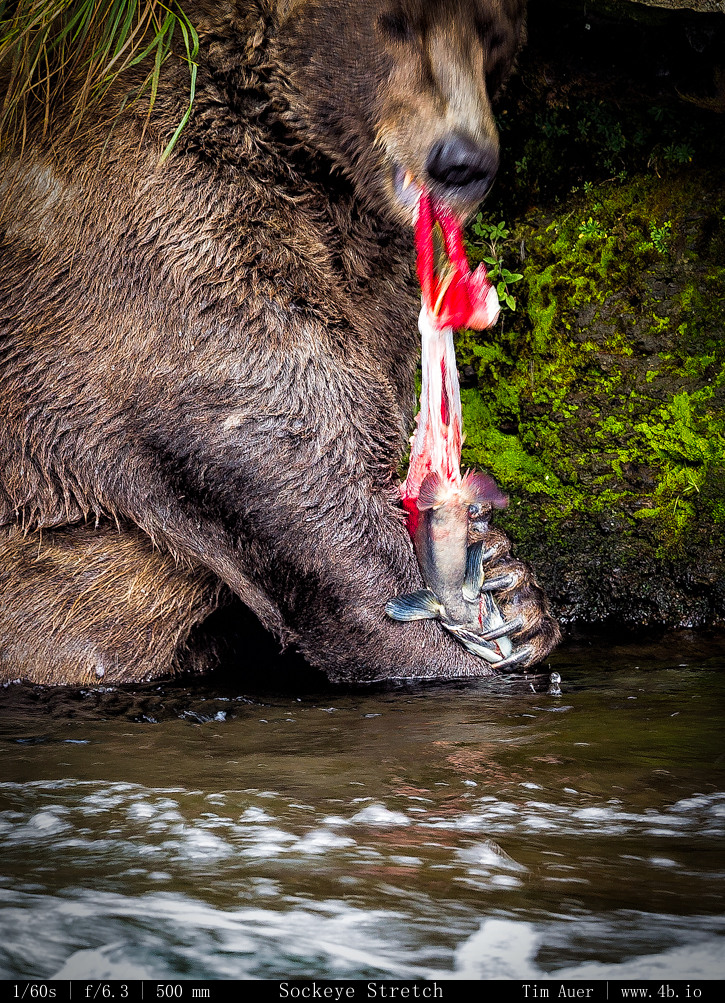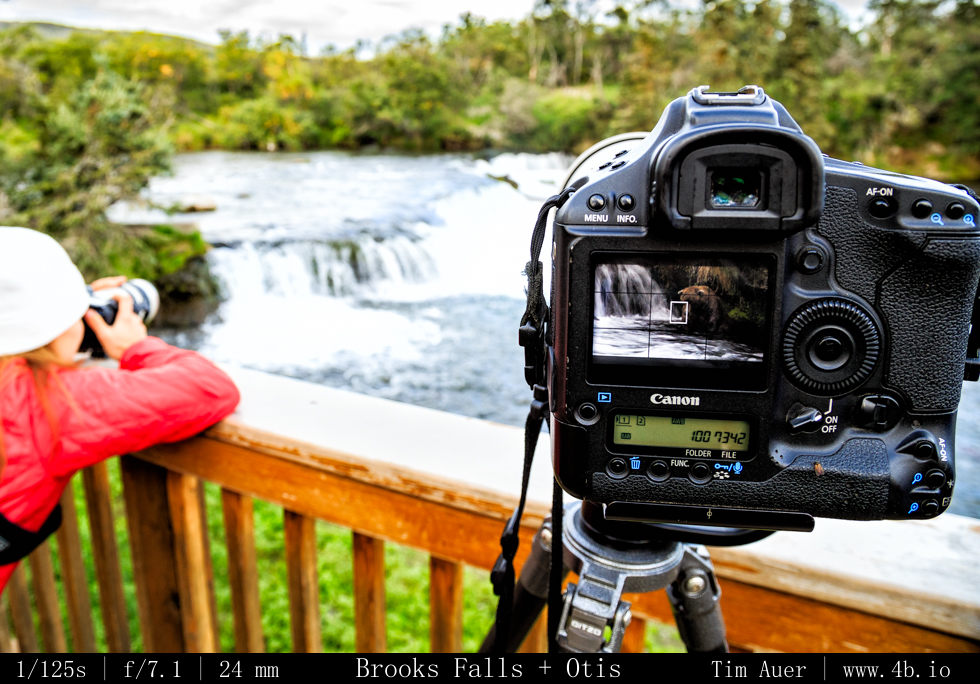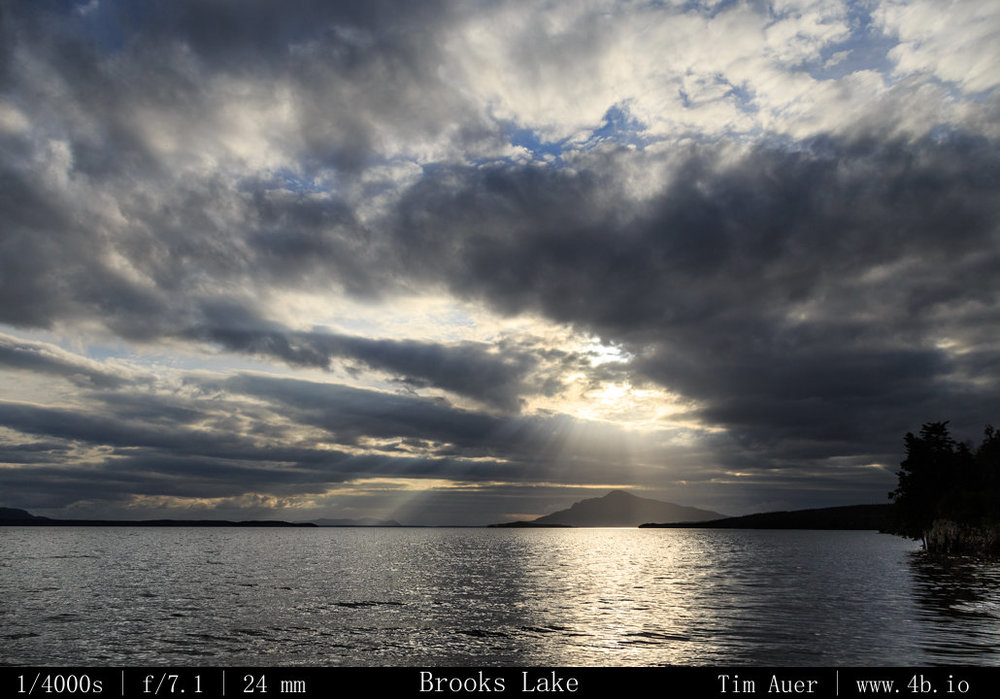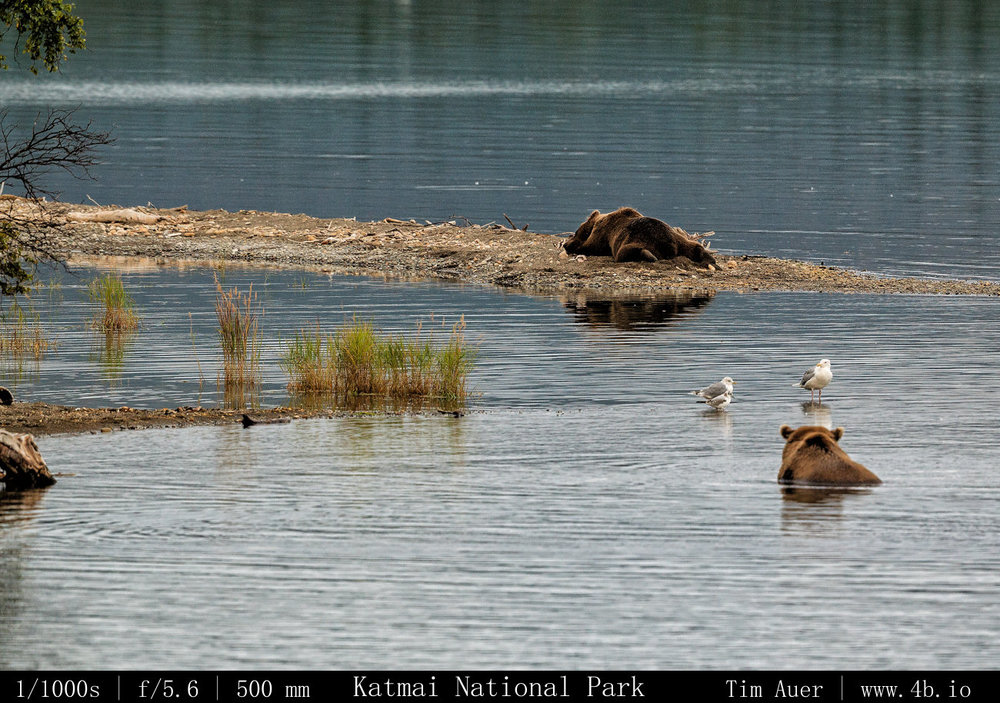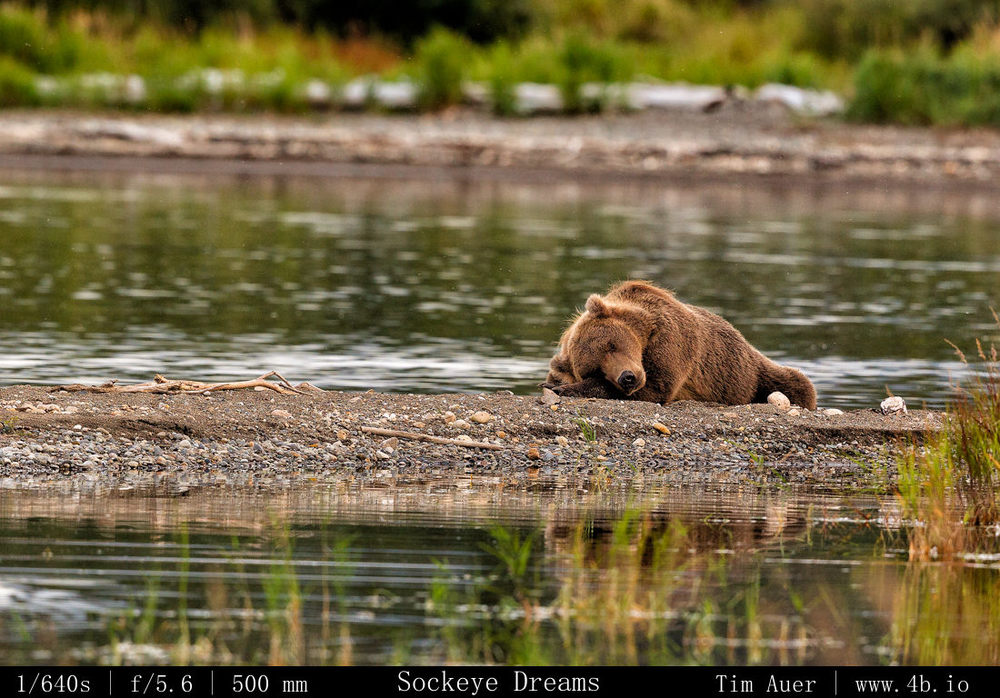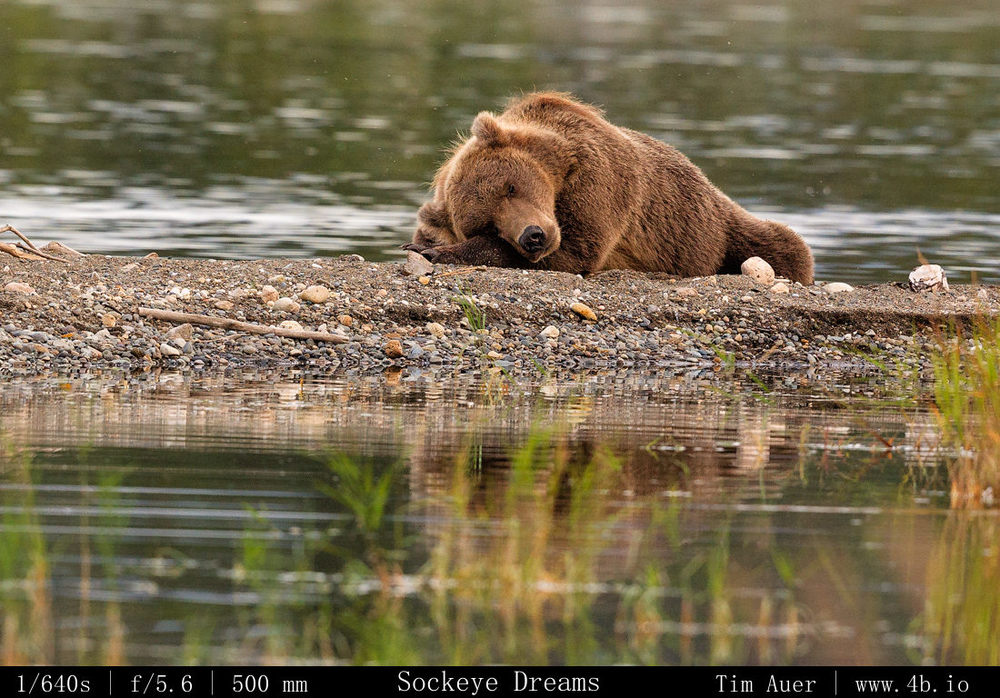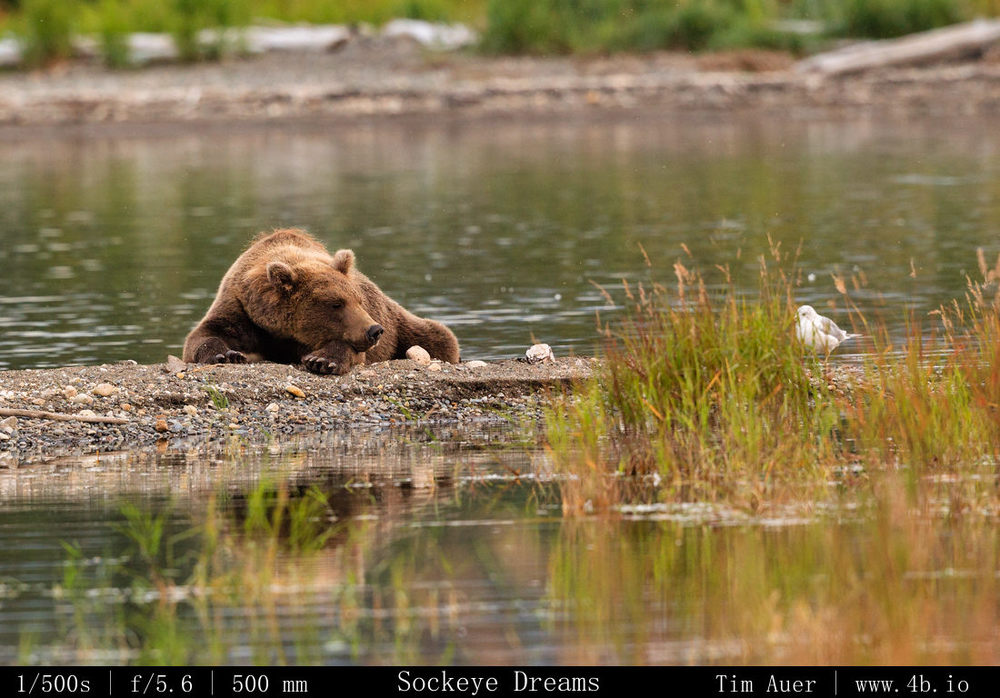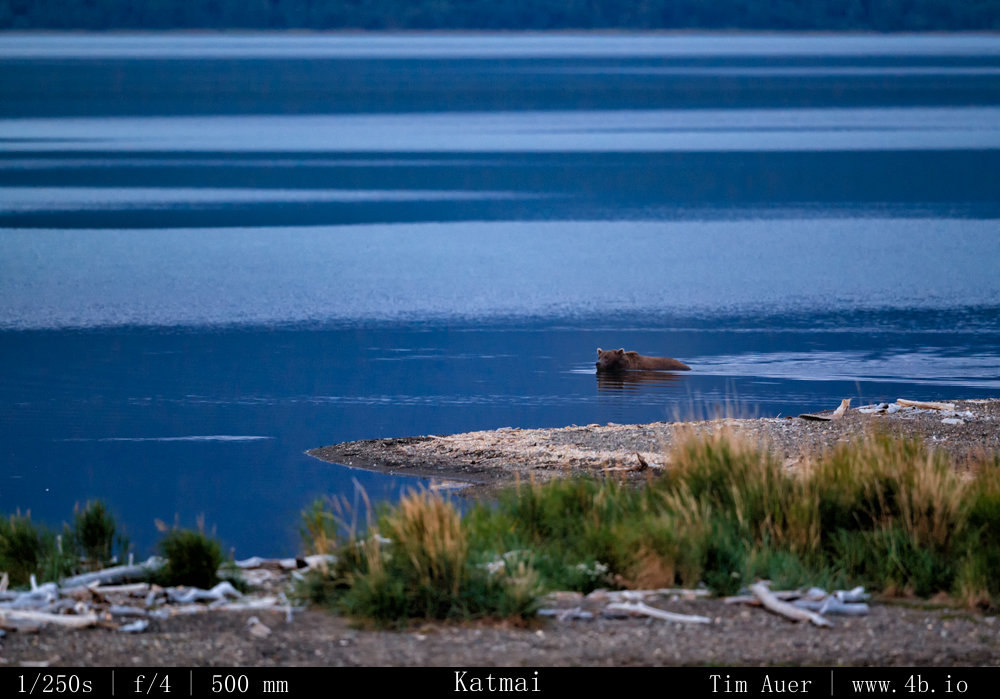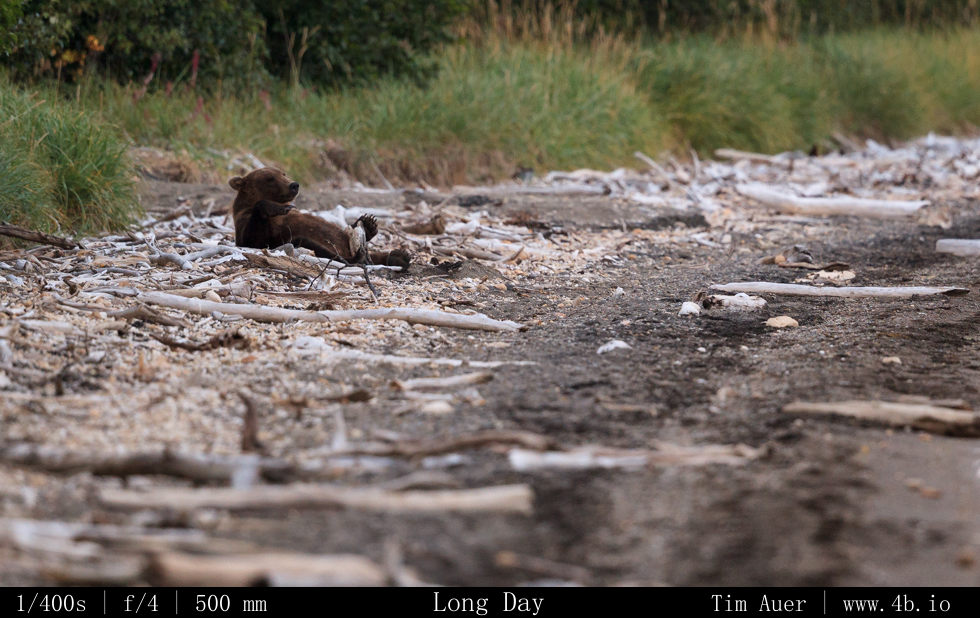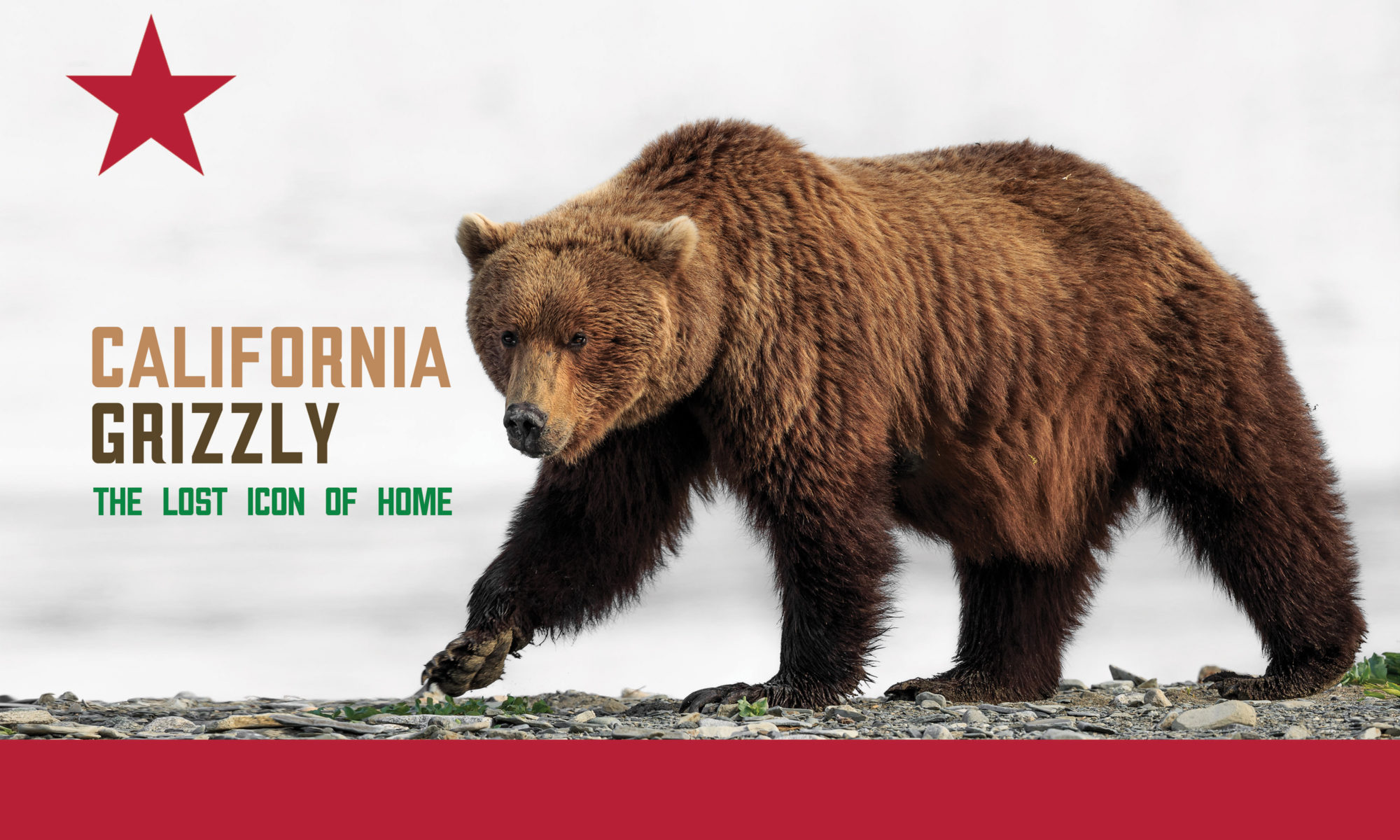Near the base of the Alaska Peninsula, a national park stretches from the Bristol Bay lowlands across to the Shelikof Strait. Lightly visited and little known outside Alaska, Katmai is larger than Yellowstone and Yosemite — combined.
– John Grabowska, Katmai, 2013. Alaska Peninsula
Katmai is an extraordinary place and I cannot wait for my next trip there
The Brooks Camp area is teeming with the world’s largest land carnivores, the coastal Brown Bear. Who, despite being so large and powerful, are as laid back and relaxed as any bear I met before. Completely different from those nasty interior grizzlies. The bears here are cool. And while a bear of any size can be dangerous, the bears of Katmai tolerate the close proximity of humans and competing bears like nowhere else. Such an abundance of high calorie food does an effective job to transform this ornery beast into a creature with an amiable disposition….
Attack that human? We Katmai bears don’t care!
I am still trying to best figure out how to organize my posts on Katmai. As you can imagine, many photos were taken, and there is a lot to say about preparations, gear reviews, bear anecdotes, and things to do differently next time. Lets start with the experiences from the first day at Brooks Camp and some general observations made about the bears…and move forward from there…
Day One
Out on the Alaska Peninsula…
And so to the Alaska Peninsula we come, seeking the limits of the known world at the ends of the Earth…A cloud-cloaked landscape, the Alaska Peninsula is accessible only by air or water.
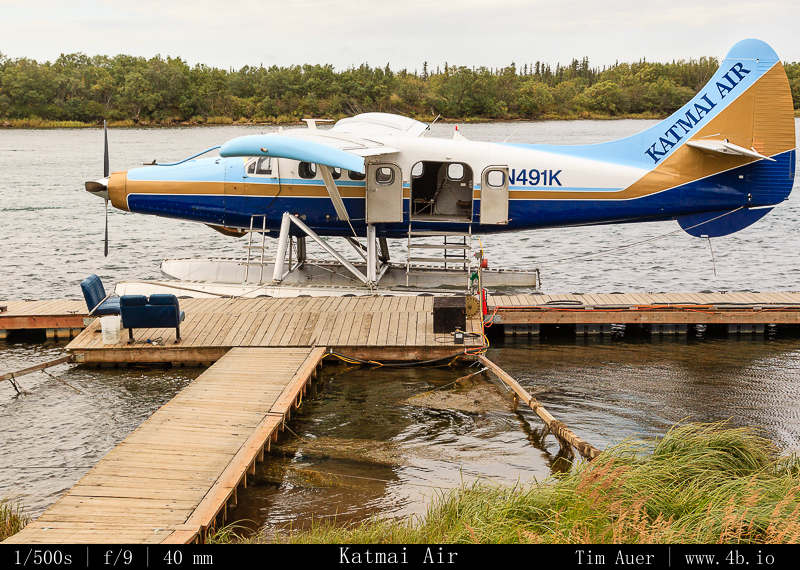
The flight from Anchorage to King Salmon took about 90 minutes on PenAir and once in King Salmon, we took a short bus ride to the Naknek River to office of Katmai Air and their dock+float plane. While at the office, we weighed our bags and learned how much over the 50 lbs limit it was. I was 80 lbs over the limit. Camera gear really starts to add up! Due the small size of the planes and their finite lift, the total load must be measured before taking off. If the load is greater than what the plane can carry, gear is jettisoned and ferried in on later planes. Fortunately I did not have this problem, I paid the $0.60/lb overage charge and was able to get all my gear on my flight. The leg to Brooks Camp is a short one, only taking about 20-25 minutes.
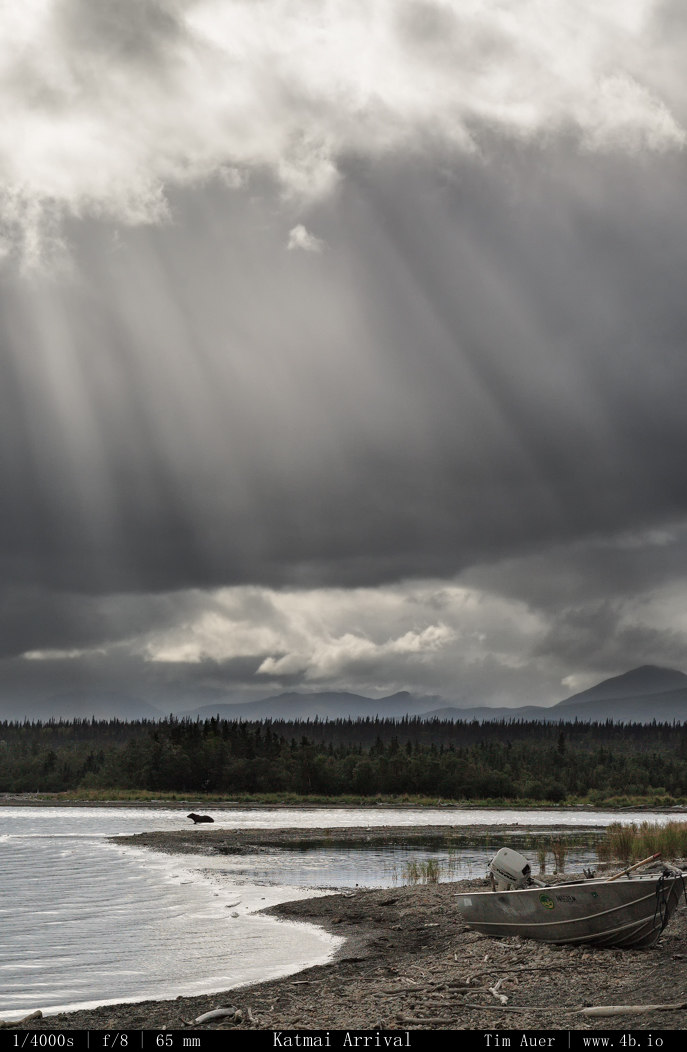
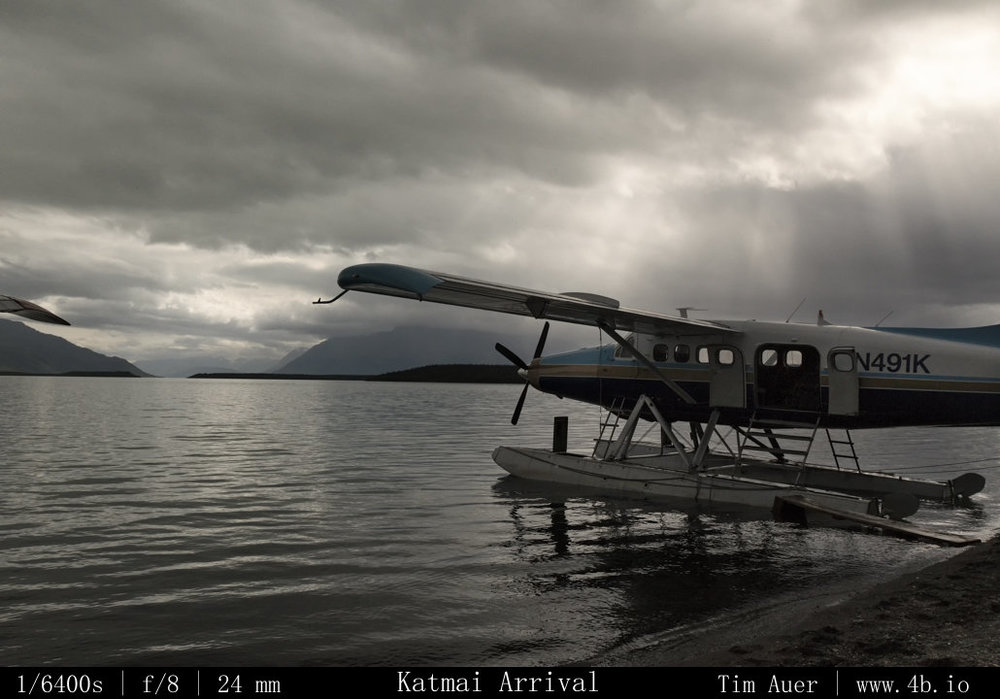
After flying over soggy lowlands, lakes, and along the sides of mountains, we softly touched down in Nahnek Lake a little before 13:00. We had arrived to Brooks Camp. God rays shone down on the mountains in the distance as we disembarked on a wooden plank that lead to us shore. Before reaching the shore, we could already see our first bear, swimming at the mouth of the river. My nightmarish fear of not seeing any bears quickly subsided, the trip was off to a good start. After finishing the 10 minute ranger led safety briefing, we lugged our gear to the campground.
This campground can described as an area of tall grass and trees enclosed by a bear resistant electric fence (not “bear proof”) about 20m from the shore of Naknek Lake. The campground is a bargain, especially when compared to the cost of the lodge. Having a National Parks pass gives a 50% discount too. Three nights of camping cost only $18. With camp set up, we set off towards the river in search of bears…..
Bear Behavior and Preparation
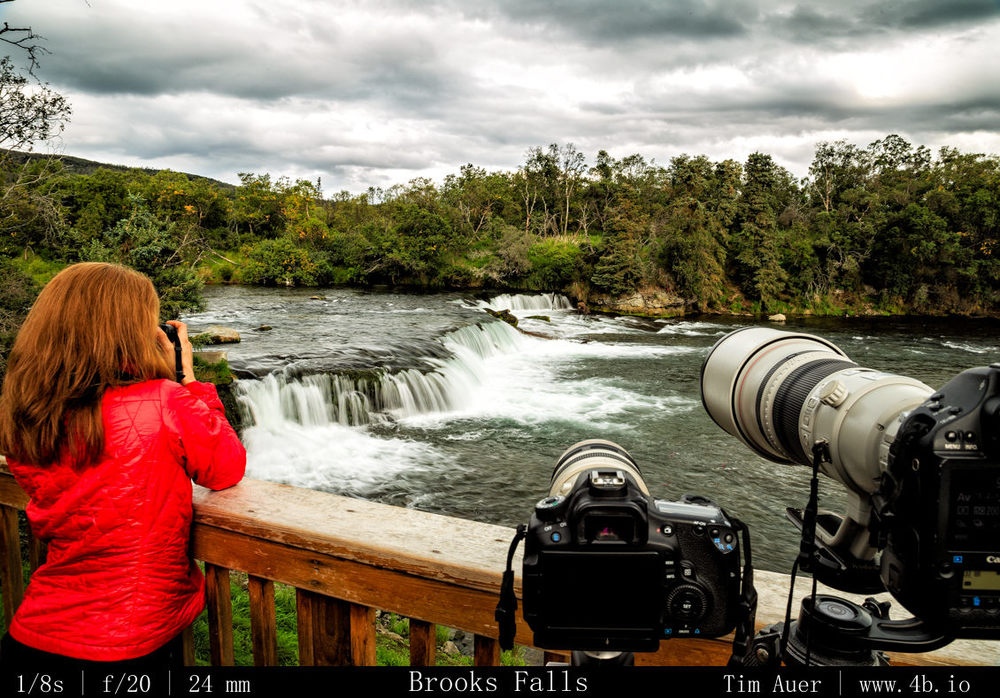
By September the brown bears of Katmai are big, fat, and round. They are only a few weeks away from hibernation and have already put away the bulk of the calories needed to survive the Alaska winter. The salmon here are Sockeye and this location is most famous for the iconic photos of the bears at Brooks Falls catching pre-spawned Salmon mid-leap. It is possible to get these photos at the peak of the salmon run, which is usually sometime in mid-July. It is during this peak that the highest concentration of bears falls is present at the falls. There have been times when over 70 bears (!!) were counted in the river. The peak is considered the best time to visit Brooks. It is also the most crowded and expensive time to visit. The next next best time to visit is early September, when most of the salmon have already spawned and are patiently waiting to die.
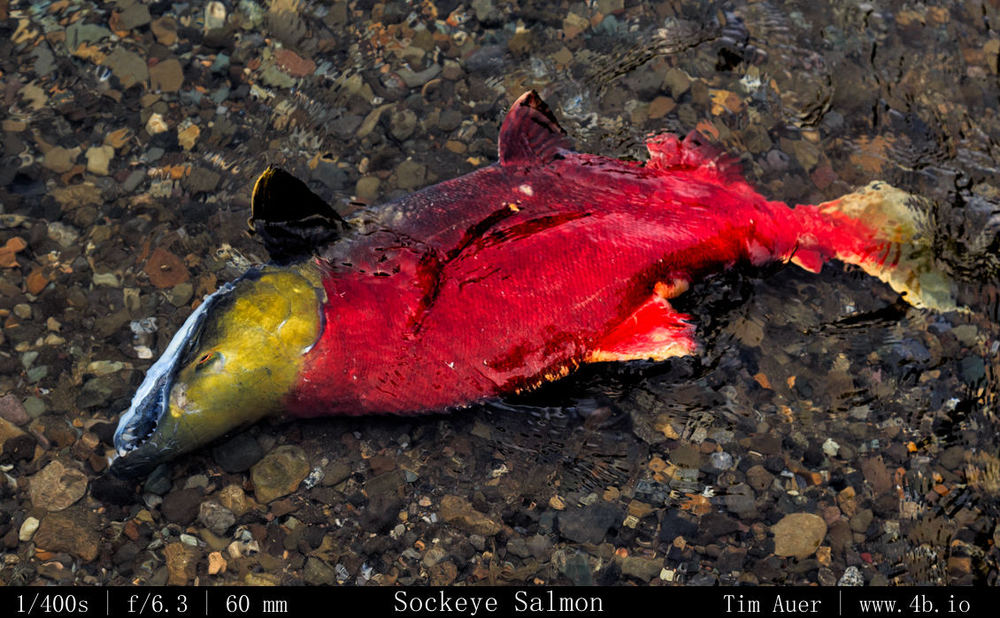
During September bears are more frequently found in at the mouth and at the source of the Brooks River. By this time, the salmon have exhausted almost all of their energy traveling from the ocean to their ancestral spawning grounds. In the process of this journey, the sockeye begin a transformation from a silver colored fish to having the appearance of blood red and distorted sea monster.
One of the interesting aspects of visiting Katmai NP for the first time (and staying multiple days) is that you can visually track your improvement as a wildlife photographer. Within a few hours, you are beginning to recognize the frequently observed bears. First by appearance, whether it is Ted with his hip scar, or Otis of the far pool, with his floppy ear and head scar. After some more time, you begin to differentiate and recognize bears by their fishing techniques and mannerisms. Some snorkel head down scanning the river. Some ambush an unsuspecting salmon by sprinting and pouncing. Some bears exclusively scavenge and others steal. A few bears prefer to sit perfectly still and let the fish come to them, snatching the fish with a quick paw. Otis is known for this, and he would sit perfectly still in the rushing water for minutes. I was even able to take a sharp photo of him in the far pool with a slow shutter speed of 1/20s.
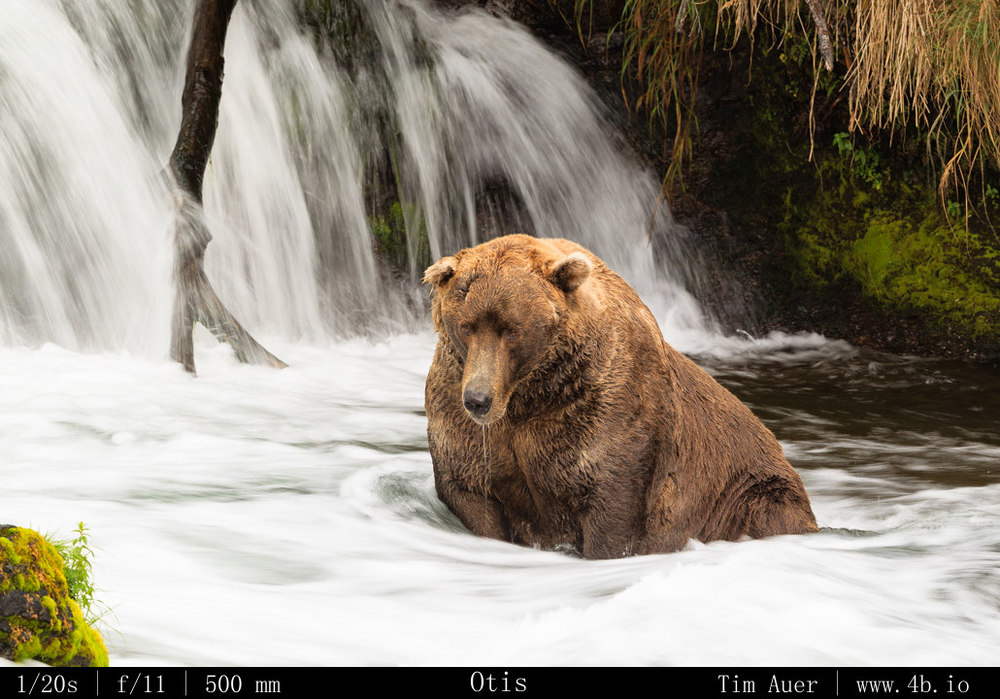
Here is an animation showing Otis devouring a salmon. Notice how he braces the fish on his shin. Click through the image below for the full version of this animation.
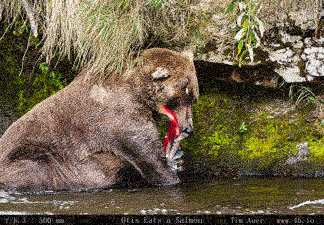
All of these observations are important and key to improving your photography. Once you are able to recognize a bear and associate specific behaviors to it, your ability to anticipate action before it happens is improved. You begin to sense when a bear locks its radar on a fish, and can be ready to click the shutter at just the right moment. Let off the shutter after the initial catch to so buffer can be writen to memory, then burst again when the bear shakes water from its head. It was even possible to recognize the differences in behavior between a failed and successful fishing attempt, before the bear brings the fish up.
I still have much to learn before I can call myself a bear behaviorist expert, but it is amazing how careful observation increases your ability to recognize behaviors, and can drastically improve your photography.
Before leaving for Alaska, I studied as much information as I could to prepare myself. I read the bear documentation and eBooks provided by the NPS, studied maps of the Brooks Camp area and viewed the web cameras. All of these resources proved to be helpful. By reading the NPS Katmai Bear eBook, it was easier to recognize which female bears were more skittish about her cubs and how it is possible to age a bear based on the size of their head in proportion to rest of body or how playful they are. Young, or sub-adult, bears may look large, but their bulk may be excess fur. The size of the head is a good way to gauge their age. The head appears bigger in proportion to the rest of their body on subadults. So if you see a bear whose head accounts for approximately 1/3 of the total length, this is a good indicator the bear is young and still growing into its head. The guide also made it easier to react safely to approaching bears and avoid a dangerous situation. Viewing the web camera gave me an early look into bear behavior and introduced me to the weather patterns and lighting conditions that would likely be encountered.
This preliminary knowledge served a couple useful purposes. One benefit was that it helped to psych myself up for the trip. Another benefit was it gave me some ideas for image compositions. I began to formulate the type of images I would work to capture once on-site. By thinking these images out in advance, I was more in control of my gear and ready to switch from say a stop-action configuration to a panning motion.
Day One Gallery
